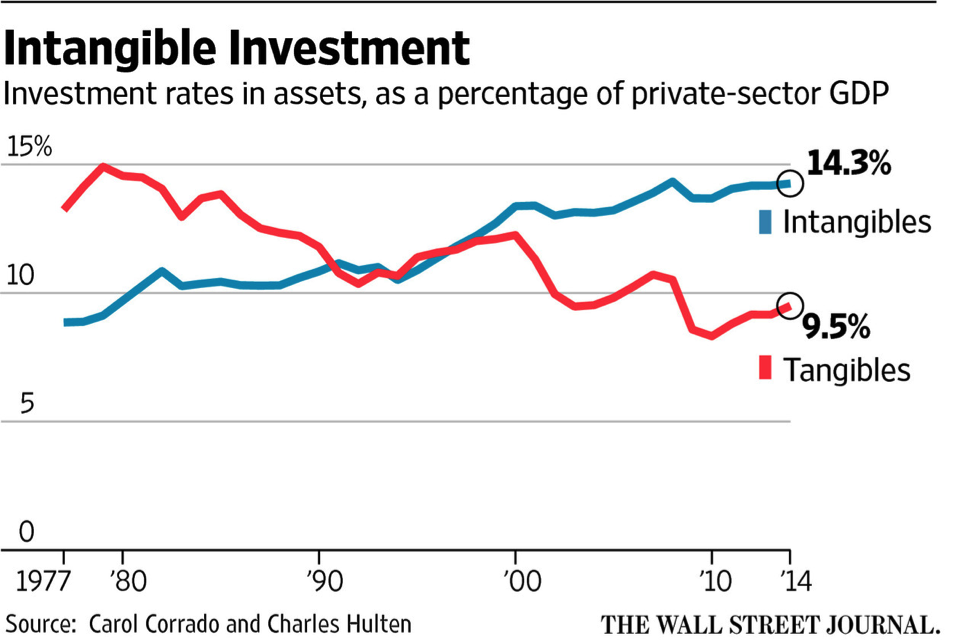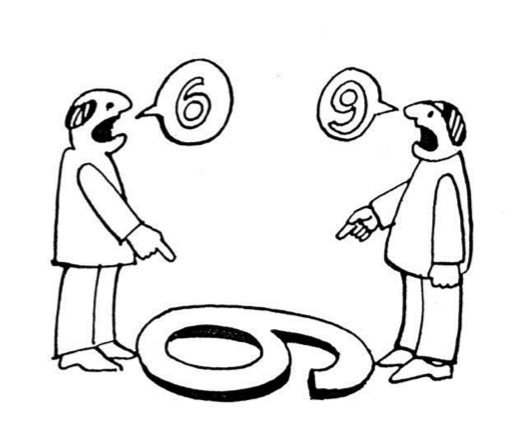...
How would you like to be a Guest Blogger for KMI? Email us at: info@kminstitute.org and let us know your topic(s)!
Conversational Leadership: 3 Steps to Improve Conversations
"If you want to go fast, go alone; if you want to go far, go together." -- African Proverb
Do conversations need to improve?
Organizations have a purpose to fulfill. There are many resources available to each organization so that they can fulfill their unique purpose. These resources can be tangible or intangible. Examples of tangible resources include buildings, computers, people and other resources that can be physically seen. Examples of intangible resources include patents, trademarks, goodwill and other resources that cannot be physically seen or touched. Over the past two decades, there has been a significant shift in how organizational value is created and maintained. The shift is from tangible value to intangible value. Organizations are now creating more value from intangible assets than tangible assets.
The Wall Street Journal has been reporting on this trend. In an article titled “Accounting’s 21st Century Challenge: How to Value Intangible Assets”, author Vipal Monga and economist Carol Corrado depict the shift. The chart shows how the majority of organizational value has shifted from tangible assets to intangible assets. Another data point is that companies within the S&P 500 are experiencing an increase in “market premium” as their intangible valuation grows. This trend is not only happening in the United States, it is happening in many countries around the world. It is also visible beyond the “for-profit” sector, we are seeing it in government, military, non-profit, not for profit and volunteer organizations.

One of the most overlooked intangible resources is “conversation”. The simple act of talking to each other may be overlooked and taken for granted. The art and science of conversation is often left to chance as well as a broad range of assumptions. It is assumed that each person and each group are having the best possible conversations that they can have.
The multi-disciplinary field of Knowledge Management is beginning to study the art and science of conversation to see if there is room for improvement. The nomenclature being used for this initiative is “Conversational Leadership”. The two core questions of this new practice have been defined as “are we having the conversation we need to be having right now” and “are we having it in the way we need to be having it.”
3 Steps To Improve Conversations
- Pure listening: Truly listen to other people’s spoken words (and non-verbals) while simultaneously and separately holding your perception of those words. Be aware of the time and space for your interpretations of other people’s words and phrases.
- Continuous awareness: As you’re speaking, raise your own awareness for multiple interpretations of the words you speak (as well as your non-verbals). Be prepared for a range of responses so that you can maintain the optimal flow of the conversation.
- Maintain curiosity: Skillfully “check-in” to see and hear how your words (and non-verbals) were perceived by other people.
Details of the 3 Steps
Step 1 - Pure listening: truly listen to other people’s spoken words and non-verbals while simultaneously and separately holding your perception of those words.
Steven Covey’s wise words of “listen to understand as opposed to respond” continue to be profound. It is quite common in most conversation to communicate back and forth through a general “gist”. If one person struggles to find words to convey their message, or if there’s slight confusion, you’ll often hear the phrase “you get the gist” from the speaker. Not only is it difficult to purely listen to someone else, it is also difficult to convey a pure message.
Each person has their own biases and filters. Biases and filters can be known by the speaker, and they can also be subconscious and unknown by the person speaking. “Confirmation Bias” is one example of a bias. In confirmation bias, an individual looks for evidence to confirm their judgement/opinions of another person. Similar to many biases, this may be done subconsciously without the conscious awareness of either person. Being conscious and aware of your own biases is a major portion of pure listening.
An example of a filter is the “Curse Word Filter.” This filter can be described as a person thinking of a curse word and then consciously or subconsciously choosing not to curse out loud in the moment. Dave Snowden is credited with the quote “we know more than we say, and we say more than we write.” The quote is often intended to separate “knowledge” from “information” and yet in this case it serves as another example of a filter. There are many biases and filters that an individual may have. Raising your own awareness and understanding of these biases and filters is essential to pure listening.
Step 2 - Continuous awareness: Raise your awareness and preparedness for multiple interpretations of the words you speak, as well as multiple interpretations of your non-verbals.
The speed of conversation is relatively fast. It is easy to miss real-time reactions and responses. It is difficult to create time and space for an impactful conversation to reveal itself. The challenge is to simultaneously stay engaged in the conversation as well as maintain awareness of yourself and others.

A generic example of this awareness is to consider the unfortunate event of a car accident. If 5 people witnessed the accident, each of those 5 people will have a separate perception, recollection and specific words to describe the event. Another example is the graphic depicted here. One person is clearly looking at the number 6 while the other person is clearly looking at the number 9. Each person is accurate and yet in their conversation they may struggle to understand each other.
This is similar to what is happening in real-time during a conversation; each person is having an emergent perception of what is being said (and not said). Consider the range of thoughts, bodily sensations, feelings and emotions you have during a conversation. Notice how Step 2 Awareness pairs with Step 1 Listening, there are many levels of conversation that are occurring and unfolding at a rapid rate. Lightly hold an awareness of “what did I just say” or “what did I just think” or “what did I just feel” while balancing your awareness and engagement in the conversation itself.
Step 3 – “Maintain curiosity: Skillfully 'check-in' to hear how your words (and non-verbals) were perceived.”
It can be quite awkward when someone says “wait, that’s not what I meant” or “can I check my understanding of what you just said”. You’ll hear phrases such as “let me try to repeat that back [in my own words]” or “what I think you’re trying to say is...” The ability to skillfully ask for clarification and understanding is rare and challenging. Similar to how Step 1 Listening and Step 2 Awareness work together, Step 3 also simultaneously works in tandem.
In the field of Organization Development, there are concepts known as “group-task” and “group-maintenance”. Group-task is “the work to be done”. In other words, the content of group-task conversations is mostly related to what each person is working on, and their current standing for those tasks and progress. By contrast, group-maintenance is “how the group is working together (or not)”. The content of group-maintenance conversations is mostly related to how the group creates and shares its collective understanding. Most conversations are group-task related and very few conversations (or comments) are group-maintenance related.
There is possibly room for improvement in the effort balance to balance group-task and group-maintenance comments and conversations. Each person will have their own comfort level for the balance, and which words to use in each case. Taking into consideration all three steps of this overall article will also support the balance, as well as the range and health of conversations.
The Positive and Progressive Result
Research has shown that people are feeling less heard and less understood. There is a common quote that “there is one fear that drives all others, that is the fear of losing or being out of control”. While conversations may not be out of control, they may often be headed in that direction. Conversations appear to be more and more concerned about activity and progress, as opposed to collectively created connection and understanding. These 3 steps provide an opportunity to increase your conversational skill which results in the “right conversations at the right time in the right way” (based upon the emergent needs of the individuals and the group). These skillful conversations continue to deliver the desired activity and progress as well as increase the human heart and soul connection. The positive and progressive result will be an increase shared understanding and quality and a decrease in much of the turmoil facing our world today.
Next Steps
The research continues in this emergent field of Conversational Leadership. If you’d like to join the conversation and contribute to the research and analysis, please contact John Hovell at John.Hovell@STRATactical.com.
About the Author: As a leader in the convergence of Knowledge Management (KM) and Organization Development (OD), Mr. Hovell is the CEO and co-founder of STRATactical. He is a practitioner, speaker, and author in OD/KM strategies and their application to current challenges. John teaches regularly for the KM Institute, delivering all levels of certification programs for public and private audiences, including the CKM and CKS in Knowledge Transfer and Continuity.
Archives
- January 2022 (4)
- December 2021 (4)
- November 2021 (2)
- October 2021 (3)
- September 2021 (2)
- August 2021 (3)
- July 2021 (2)
- June 2021 (5)
- May 2021 (6)
- April 2021 (10)
Pages
RECENT POSTS
...












 ...
...
